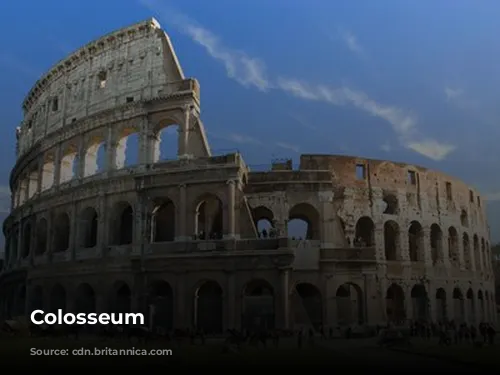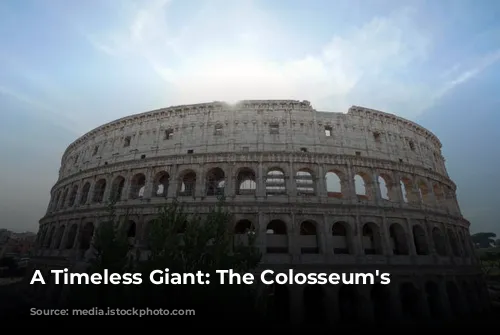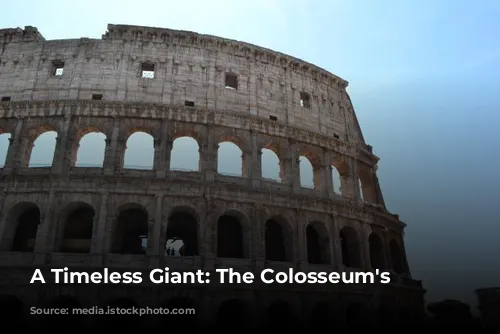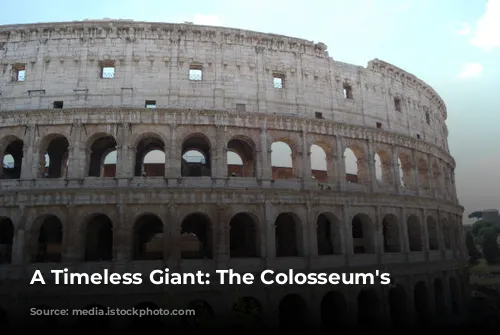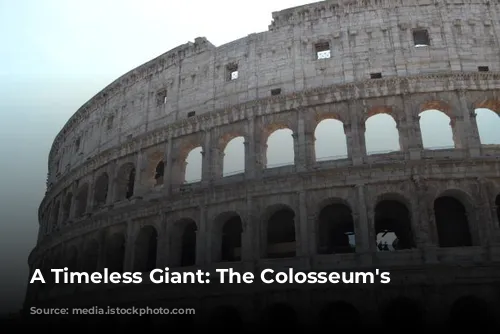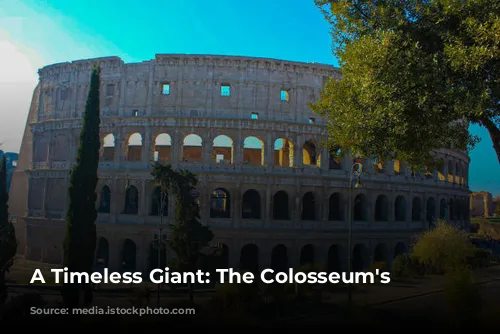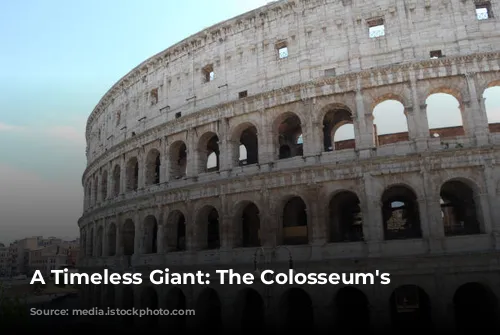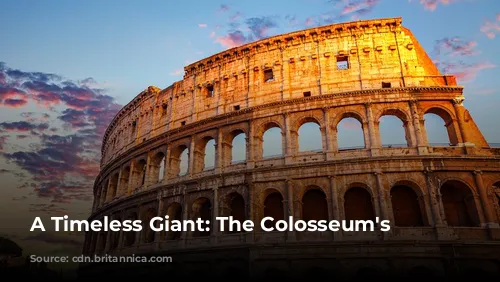The Colosseum, one of the most remarkable structures remaining from the Roman Empire, stands as a testament to ancient Rome’s engineering and architectural prowess. Its enduring grandeur continues to captivate visitors, making it a cornerstone of Italian tourism. In 2018 alone, the Colosseum, Roman Forum, and Palatine Hill combined to generate over $63.3 million in revenue, surpassing any other tourist attraction in Italy. This enduring popularity underscores the Colosseum’s significance as a cultural and historical treasure.
A Monument Transformed: From Arena to Fortress
The Colosseum’s journey through time has been marked by both glory and neglect. Following the fall of the Western Roman Empire, the once-mighty amphitheater fell into disrepair. The Frangipane and Annibaldi families, powerful Roman families, repurposed the arena as their fortress in the 12th century. This period saw the Colosseum transformed from a spectacle of entertainment to a symbol of power and defense. Later, in the late 15th century, Pope Alexander VI permitted the Colosseum to be used as a quarry, further contributing to its decline. This act of stripping the Colosseum of its valuable materials symbolized a complete disregard for its historical importance. The Colosseum endured over a thousand years of neglect before state-funded restoration efforts began in the 1990s. This marked the beginning of a new chapter, focusing on preservation and understanding the history of this magnificent structure.
A Vision of Imperial Might: The Colosseum’s Origins
The Colosseum’s construction began under the reign of Emperor Vespasian, between 70 and 72 CE, as a symbol of imperial power and a means of revitalizing Rome following the tumultuous “Year of the Four Emperors” in 69 CE. Like other amphitheaters, Vespasian envisioned the Colosseum as a grand entertainment venue, hosting gladiatorial combat, animal hunts, and even mock naval battles. The Colosseum was meant to enthrall the populace, showcasing the power and grandeur of the Roman Empire. The construction of the Colosseum was financed by the spoils of war, specifically from the plunder of Jerusalem in 70 CE, and the labor force was comprised of enslaved Jews from Judea. This stark reminder of Roman conquest adds a layer of complexity to the Colosseum’s history.

A Colossal Structure: Architectural Marvels
The Colosseum, also known as the Flavian Amphitheater, is a monumental elliptical structure, built with stone, concrete, and tuff. Rising to four stories, it measures an impressive 620 by 513 feet (189 by 156 meters), capable of accommodating up to 50,000 spectators. This impressive scale highlights the Romans’ mastery of engineering and architecture. The Colosseum became renowned for its gladiatorial combat, a spectacle that captivated the Roman public. The arena witnessed countless battles, thrilling crowds with the skill and bravery of the gladiators. The Colosseum’s construction was a testament to Roman ingenuity and ambition, showcasing their ability to create architectural wonders on an unparalleled scale. This structure served as a symbol of the Roman Empire’s power and grandeur, showcasing its architectural prowess and engineering brilliance.
A Symbol of Imperial Power and Public Entertainment: The Colosseum’s Design
The Colosseum stands east of the Palatine Hill, on the site of Nero’s Golden House. The artificial lake, a centerpiece of Nero’s lavish palace, was drained to make way for the Colosseum, a decision with both practical and symbolic significance. This deliberate act symbolized the replacement of a tyrannical emperor’s extravagance with a public space designed for the entertainment and enjoyment of the Roman people. The Colosseum’s construction, unlike earlier amphitheaters, was a freestanding structure, built entirely from stone and concrete. Its intricate system of barrel vaults and groin vaults allowed it to stand tall without relying on hillside support, showcasing the Romans’ advanced architectural knowledge. The Colosseum’s exterior features three tiers of arcades adorned with engaged columns in the Doric, Ionic, and Corinthian orders, a design that inspired the Renaissance codification known as the assemblage of orders. The use of travertine, volcanic tufa, and concrete in its construction further emphasizes the Romans’ mastery of materials and their ability to create durable and magnificent structures. The Colosseum’s design, a combination of practicality and aesthetic appeal, reflects the ambition and ingenuity of Roman engineers and architects.
A Stage for Spectacle: The Colosseum’s Features and Events
The Colosseum’s design ensured comfort for the spectators, with seating for 50,000 individuals. A massive retractable awning, known as a velarium, protected them from the sun. Hundreds of Roman sailors were needed to manipulate the rigging and extend or retract this massive awning, showcasing the complexity and scale of this undertaking. The Colosseum hosted a wide array of spectacles, from gladiatorial combat and animal hunts to elaborate mock naval battles. These events were meant to entertain the masses and reinforce the empire’s power. While the Colosseum’s role in the martyrdom of early Christians remains uncertain, its history as a center of public entertainment is well-documented. The Colosseum’s vibrant past, filled with thrilling spectacles and historical events, continues to fascinate and inspire visitors today. The Colosseum, a true marvel of Roman engineering and architectural ingenuity, continues to enthrall visitors and serve as a poignant reminder of the enduring legacy of the Roman Empire.
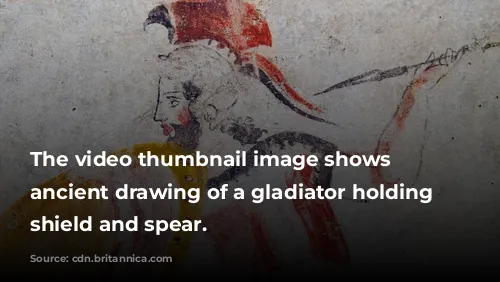
A Legacy of Endurance: Preservation and Legacy
Throughout the medieval period, the Colosseum served various purposes, including a church and a fortress for prominent Roman families. Over time, damage from lightning, earthquakes, vandalism, and pollution took their toll on the structure, leading to the removal of its marble seats and decorative elements. The Colosseum was treated as a quarry for over a thousand years, with little regard for its historical significance. Preservation efforts gained momentum in the 19th century, with notable contributions from Pope Pius VIII. In the 1990s, a major restoration project was undertaken, further safeguarding the Colosseum’s legacy. Today, the Colosseum attracts millions of visitors annually, making it one of Rome’s most popular tourist attractions. The Colosseum’s enduring presence continues to captivate visitors and showcase the Romans’ mastery of architecture and engineering. The Colosseum’s story highlights the interplay of historical events, cultural transformations, and preservation efforts that have shaped its journey through time. This monumental structure serves as a reminder of the grandeur of the Roman Empire and the enduring power of history.
